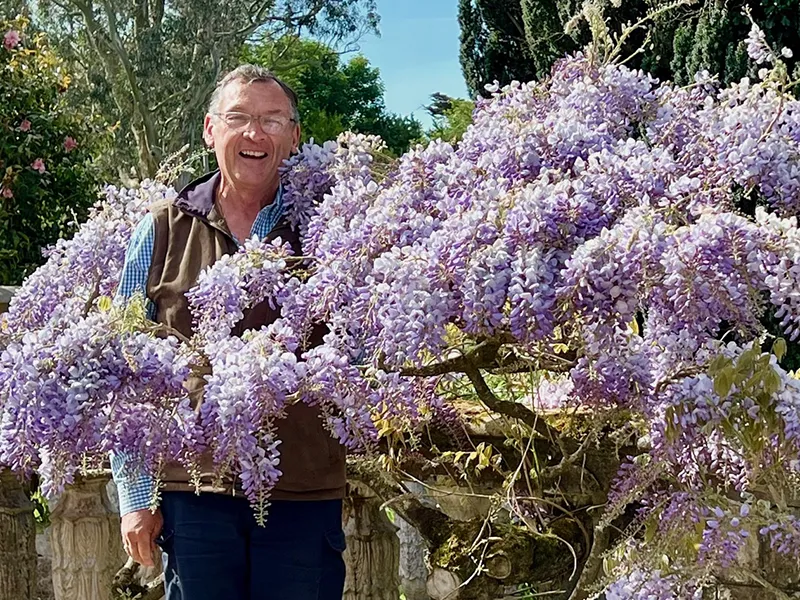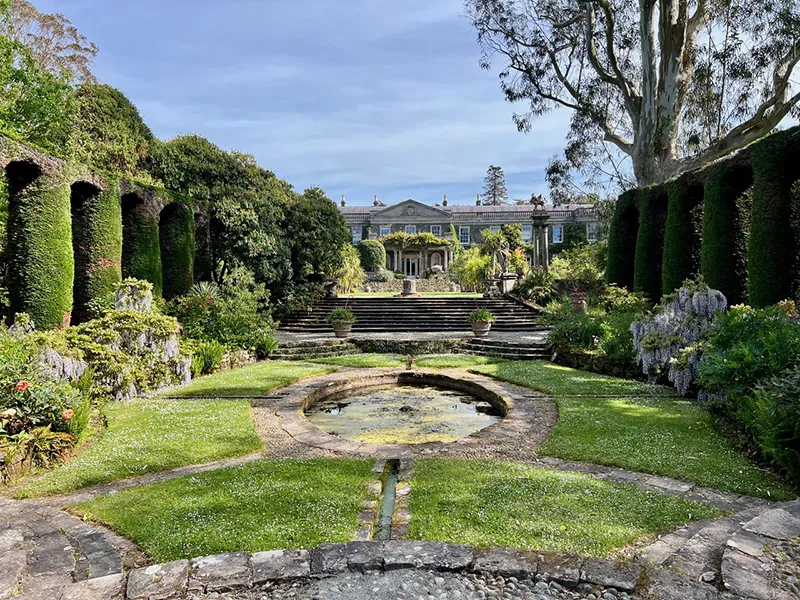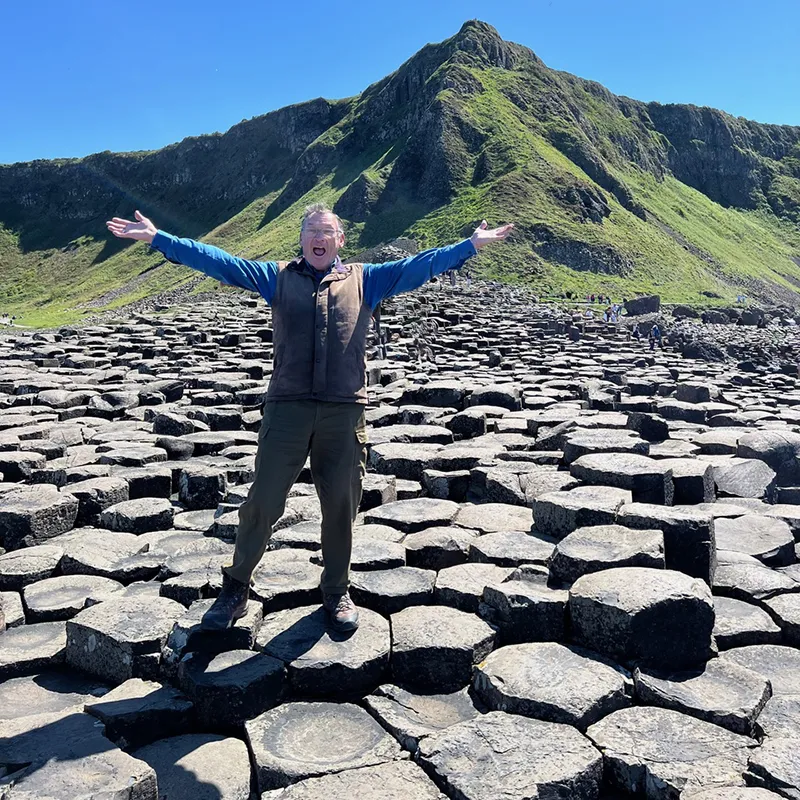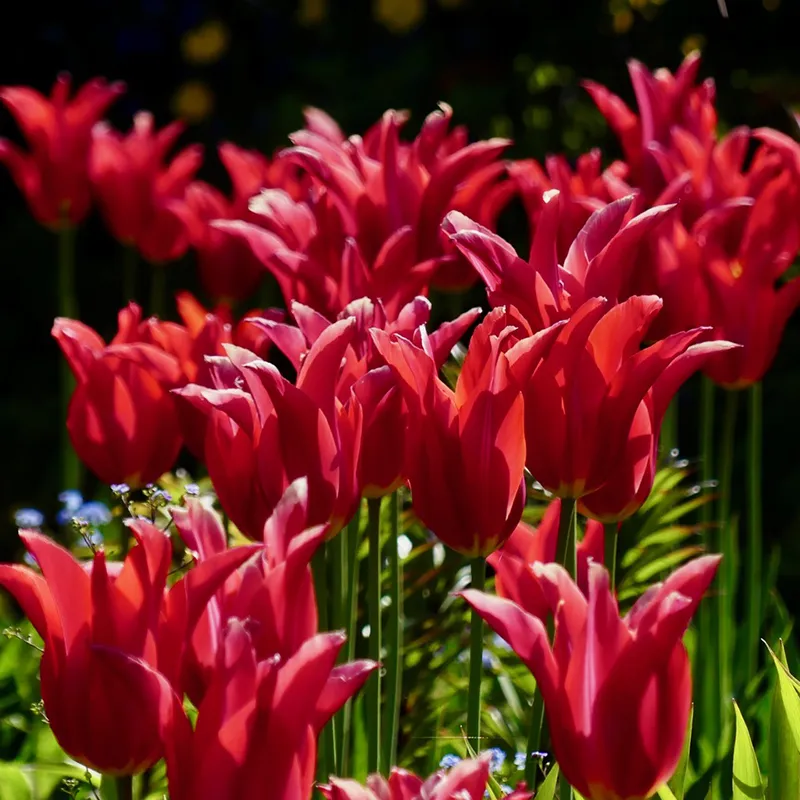The warm sunny days have followed us up from the south and we conclude our Irish adventure in the north with a total of 18 days straight of sunshine – might be a record or ‘just the luck of the Irish’! Great for travellers but the locals are praying for rain, with very little falling this season in comparison to the average. Last year was apparently the complete opposite, with massive falls making it impossible for the farmers to get their machinery out onto the fields. Sounds a bit like what parts of Eastern Australia are facing now.
The lack of rain has not detracted from the beauty of the gardens and Northern Ireland has some gems. Top of the list has to be the famous Mount Stewart in County Down, only a few minutes up the road from our seafront cottage. The gardens, regarded as one of the world’s top ten gardens, were created by Lady Londonderry just over 100 years ago and include beautiful formal parterres around the house, a gorgeous Lake Walk and numerous woodland walks. The garden was ablaze with spring colour and the Mollis Azaleas and rhododendrons were the stars. Not far away is Rowallane Garden, created in the mid 19th century by the Rev John Moore and further developed by his nephew Hugh Moore, a famous plantsman in the early 1900s. The highlight was the lovely rock garden, awash with spring colour.
Apart from a visit to Mount Stewart, the other ‘bucket list’ destination on my Irish trip was a visit to the Giant’s Causeway, Northern Ireland’s most popular tourist destination, and I was not disappointed. Steeped in myths and legend, the setting is a spectacular, dynamic coastal landscape of Atlantic waves, rugged cliffs, fascinating geographical antiquity, secluded bays and magnificent views. The mainly hexagonal basalt stone columns were formed about 60 million years ago due to volcanic eruptions. A wonderful place to visit, especially on a bright sunny day and be wrapped in the natural beauty and all the local folklore.
Ireland’s rich history stretches back into the mists of time and on the way North, we immersed ourselves in its neolithic past with a visit to the Hill of Tara, Knowth and Newgrange. The Hill of Tara is an ancient ceremonial and burial site near in County Meath and is said to be the place of the inauguration and seat of the High Kings of Ireland. Tara consists of numerous monuments and earthworks—dating from the Neolithic to the Iron Age. Newgrange is a 5,200-year-old passage tomb located in the Boyne Valley, near Drogheda. Dating back to 3,200 B.C. and built in the Stone Age, making it older than Stonehenge. Newgrange is recognised as an ancient temple, a place of astrological, spiritual, religious and ceremonial importance. The passage and chamber align with the rising sun at the winter solstice. It was a real treat to stand in the passage in complete darkness and experience the atmosphere of the tomb. We also visited the equally impressive Knowth Megalithic Passage Tomb and 18 smaller burial mounds in the area.
Ireland certainly had it all for this visitor – the natural beauty, thousands of years of history, great gardens and a unique cultural history. Over the 18 days of my trip, I have travelled thousands of kilometres and taken in some amazing sights and experiences. The great added bonus of course was the incredible sunny weather which certainly put the ‘cherry on top’. Next stop London and the Chelsea Flower Show!
George Hoad AM
















